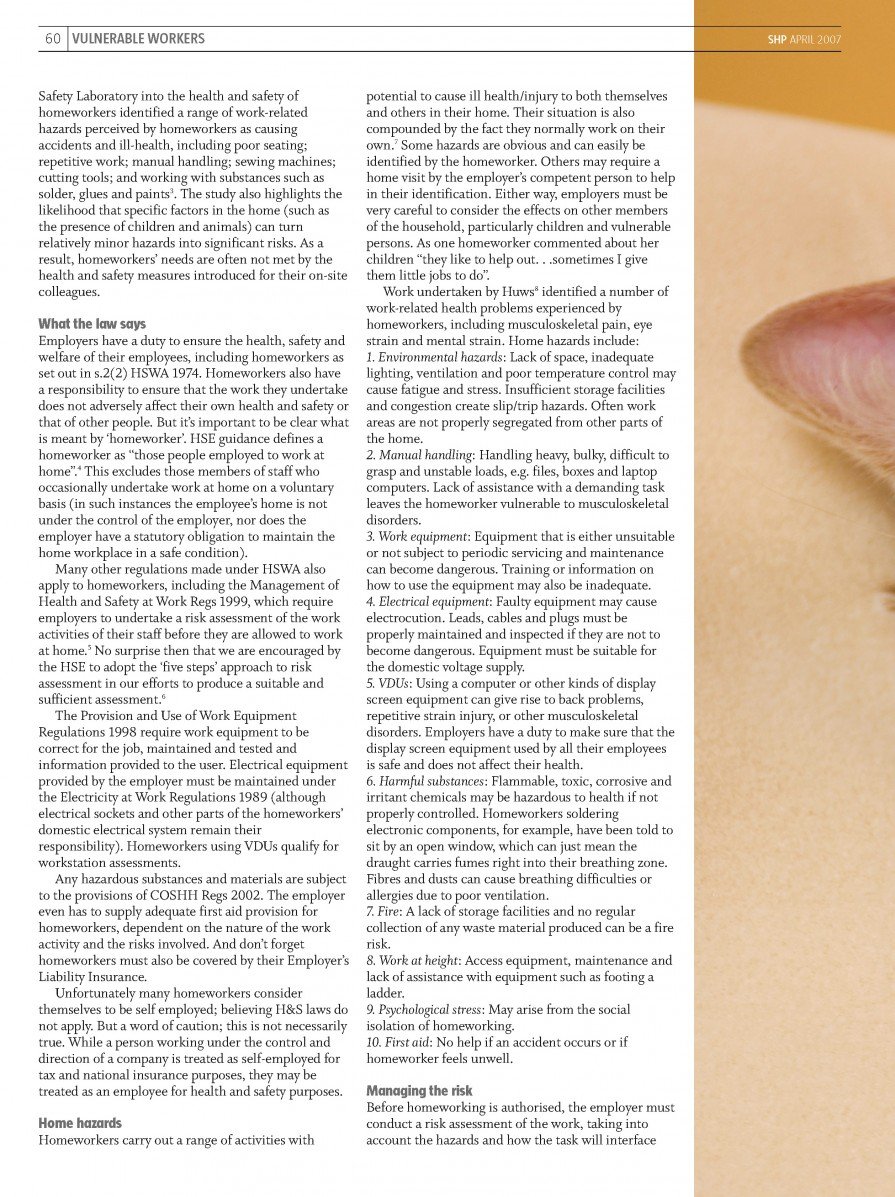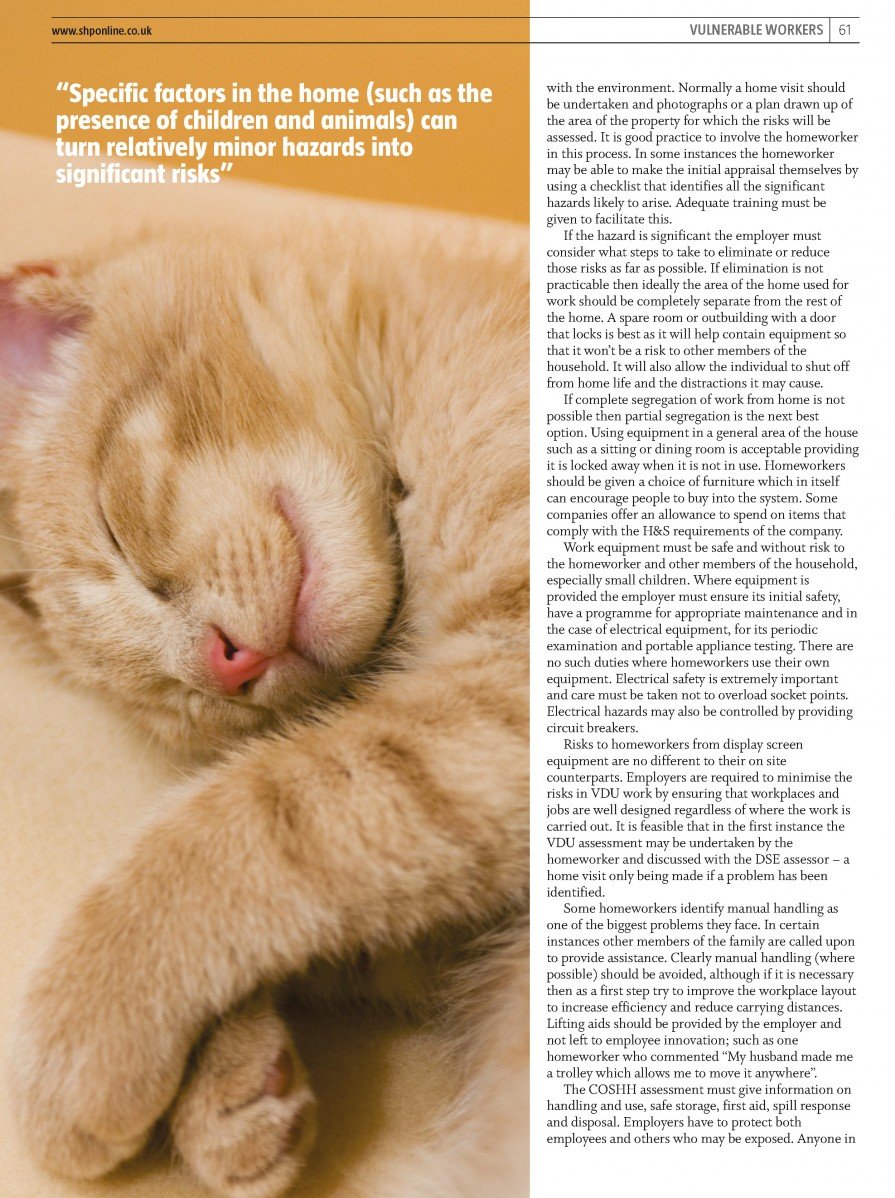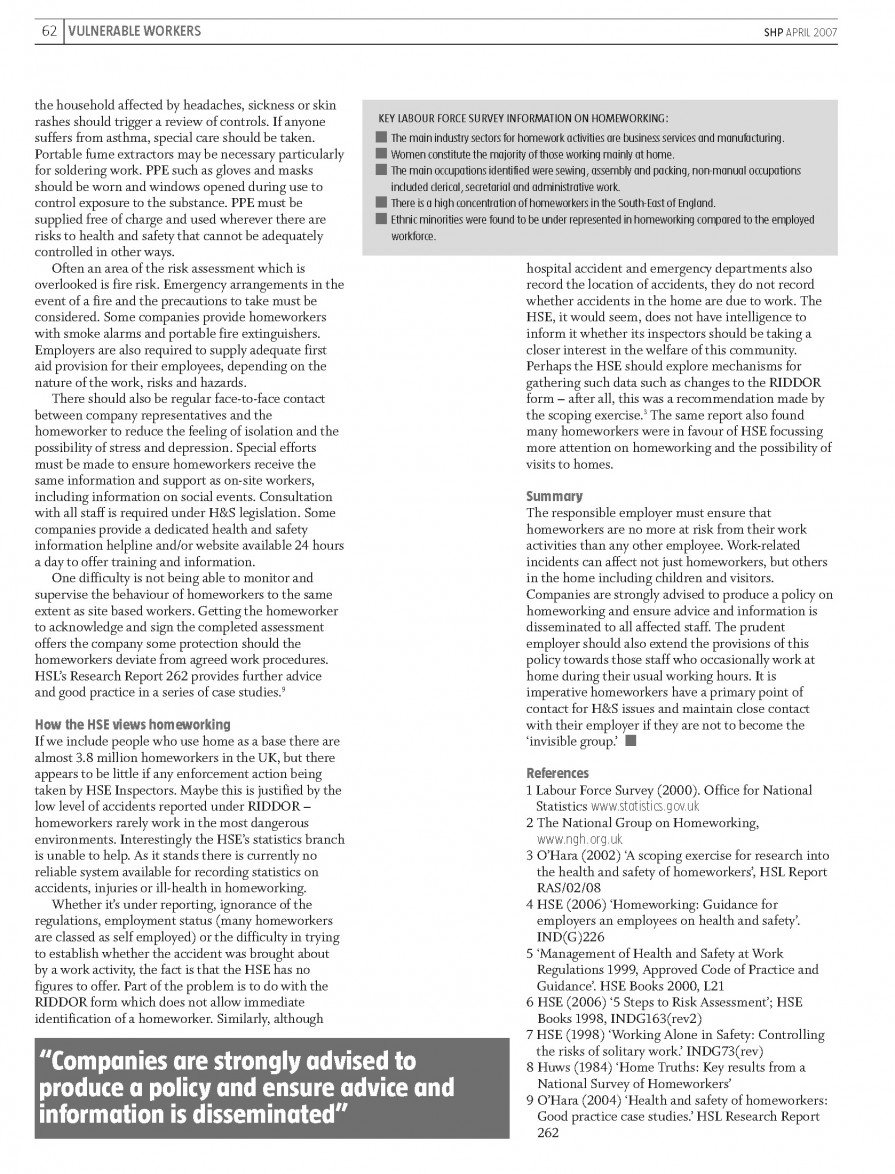Throwback Thursday: Home working

Home working can benefit both workers and employers, giving flexibility to the workforce and cost savings for businesses. In April 2007, Nick Wilson examined some of the downsides to home working, and what employers can do to better support their remote workers.
Although it can offer a better work/life balance and cut out an unhappy commute, some people can find working at home more stressful than making it into the office every day. Workers can become isolated and feel out of touch with the company and its culture. There can also be hazards in the home that cannot be monitored, causing accidents and ill-health, such as poor seating, repetitive work, using cutting tools and manual handling. Therefore, home workers’ health and safety needs are not always met to the same standards as their office-based colleagues.
Wilson looks at the law at the time and how it applies to home working, and what the employer’s duty is, as well as risk assessments that can be carried out to provide a better home working environment.




What makes us susceptible to burnout?
In this episode of the Safety & Health Podcast, ‘Burnout, stress and being human’, Heather Beach is joined by Stacy Thomson to discuss burnout, perfectionism and how to deal with burnout as an individual, as management and as an organisation.
We provide an insight on how to tackle burnout and why mental health is such a taboo subject, particularly in the workplace.
Throwback Thursday: Home working
Home working can benefit both workers and employers, giving flexibility to the workforce and cost savings for businesses. In April
Safety & Health Practitioner
SHP - Health and Safety News, Legislation, PPE, CPD and Resources
Related Topics
Key health and safety risks in the retail sector
Over 90% of stalking victims experience psychological impacts
Webinar: Perfecting Your Lone Working Policy: An Essential Guide to Safety and Success





